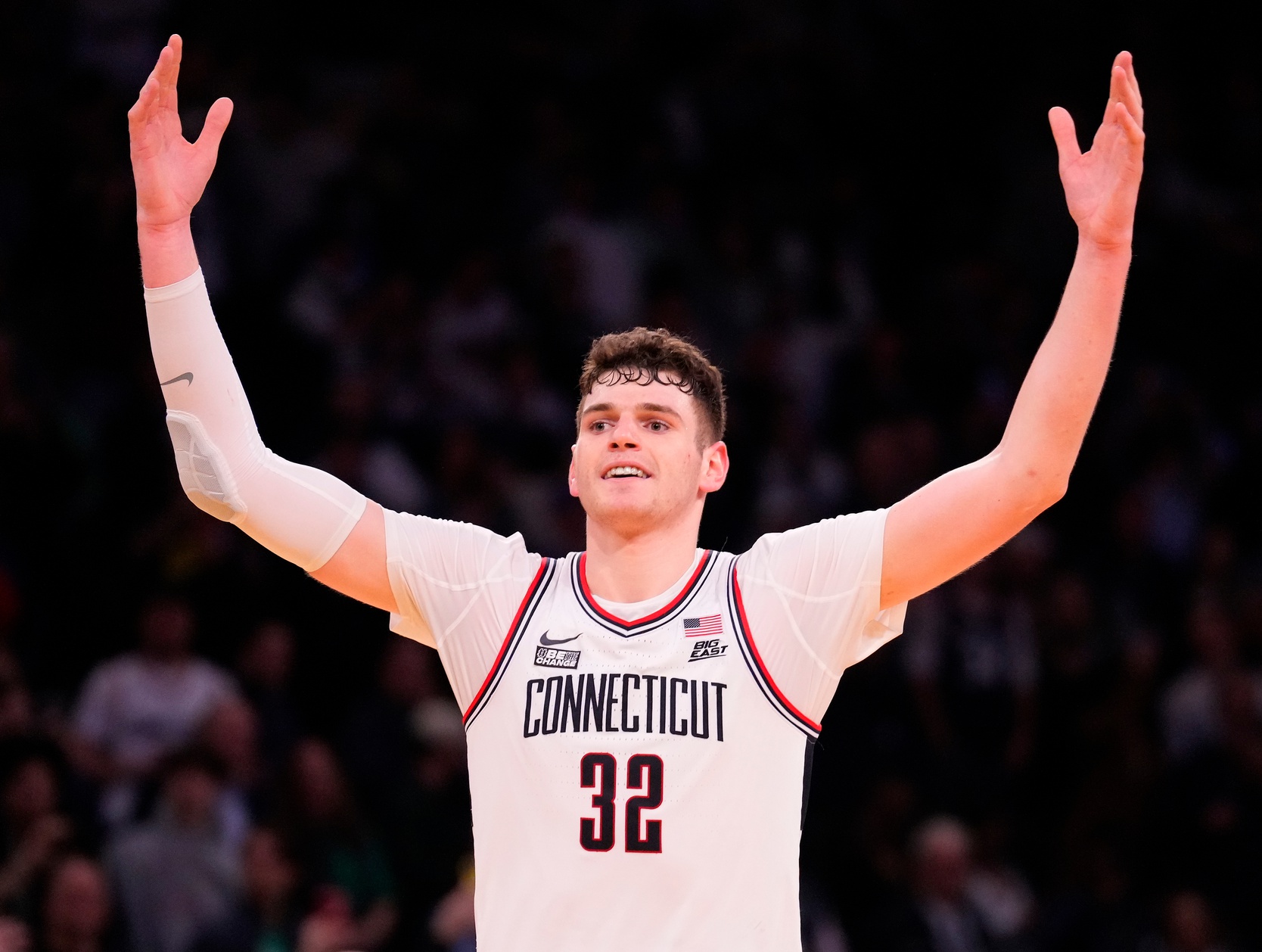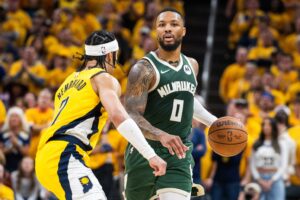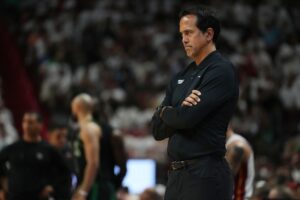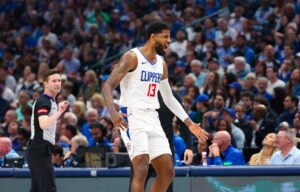With March Madness upon us, numerous NBA prospects will be looking to boost their stock.
You will notice a few top collegiate prospects left off this list. The most notable names include Reed Sheppard, Rob Dillingham, and Dalton Knecht. These NBA prospects don’t need March Madness for big-game performances, as they’ve consistently had explosions throughout the year. Scouts have a good feel for their strengths and weaknesses, and most already have a projected role. This is also why Yves Missi misses the list, as his role is already defined at the next level. Big game performances most likely won’t sway these players’ stock dramatically in either direction.
Without further ado, let’s look at NBA prospects who could use big-game performances to boost their stock.
NBA Draft Prospects Who Need Big March Madness Performances
1) Cody Williams: Colorado
Cody Williams has been consistently rising up draft boards and may still be the first collegiate player selected. Colorado made it to the Pac-12 final and sits as a play-in team for March Madness. Williams is a six-foot-eight slender wing in his freshman season. He’s also the younger brother of starting NBA guard Jalen Williams of the Oklahoma City Thunder. Williams is a smooth and fluid athlete who looks to have a very polished all-around game for his age. Like Williams, young wings with production and upside are always at the top of the draft.
As a top-five NBA prospect, though, scouts want more aggression and big-game performances out of Williams. That’s why he tops the list. Williams is the highest-profile prospect who hasn’t already exploded for big performances similar to the names mentioned previously. March Madness is the perfect opportunity to address this critique.
2) Ja’Kobe Walter: Baylor
It’s an easy buy-in process when analyzing Ja’Kobe Walter’s skillset. He’s long, athletic, and can shoot the three-ball at a high clip. He can also use this length and athleticism to be effective on the defensive end. This 3-and-D archetype makes Walter one of the safer bets in this draft. Or does it? Walter has shot at lower percentages in the back half of the season and had some underwhelming performances on defense.
He isn’t the strongest in the self-creation department, so his stock is solely based on that 3-and-D role. He will need to re-confirm particular worries regarding his defense and consistent shooting. Baylor is preparing to make a deep run in the tournament, and Walter could use big-game performances to stabilize his stock.
3) Kyle Filipowski: Duke
Kyle Filipowski is a seven-foot big man with good perimeter skills. He’s shown much better percentages and overall play so far in his sophomore season at Duke. It’s helped place them as the number nine overall team in the country. His shooting touch and fundamentals for his size certainly all pass the eye test. He hopes to make a team in the back end of the lottery very happy on draft night.
Filipowski plays alongside other NBA prospects looking to boost their stock in March Madness, but he’s the top guy. He will hope to make a top-10 push with some big-game performances.
4) Stephon Castle: UConn
Stephon Castle is a tall lead guard at six-foot-six. His physical tools allow him to be either a point guard with good size or a wing with good ball-handling ability. Castle has also shown that he can compete on the defensive end of the floor. Currently, Castle’s stock is still based more on upside and projections than production. He began the season struggling to find a rhythm on a stacked UCONN team. However, Castle has settled in as a playmaking guard in the middle of conference play, with great defense. His stock will increase if he can shoot the ball well and put up good numbers on a championship-caliber UCONN team.
5) Donovan Clingan: UConn
Donovan Clingan is a seven-foot-two big man and our second UCONN Husky. Clingan has a clear projected role as a frontcourt anchor on the defensive and offensive side of the ball. He has great shot-blocking ability and is a good play finisher on the interior. Naturally, there have been questions about Clingan’s archetype being suitable for the NBA. Clingan isn’t a bad mover for his size, but injury and having only played three 30-plus minute games has caused concern. He’s playing his best basketball currently, though, and Clingan will hope to have a dominant postseason to secure high positioning on draft boards.
6) Johnny Furphy: Kansas
Johnny Furphy is a freshman sharpshooting wing at Kansas, standing at six-foot-nine. Kevin McCullar Jr., Kansas’ best NBA prospect, just announced he would be kept out of March Madness with an injury. This paves the way for Furphy to help lead a fourth-seeded Kansas on the big stage. Scouts question Furphy’s athleticism and ability to compete on the defensive end. There also doesn’t seem to be much upside in shot creation, but Furphy has shown decent playmaking as a connecting distributor. Furphy has earned his way into a starting key contributor as a freshman on a good Kansas team. Now it’s time to take the next step and show scouts he can be a star in his own right.
7) Zach Edey: Purdue
Like Clingan, Zach Edey’s archetype as a big with no perimeter game and limited mobility usually doesn’t bode well for the NBA. He’s a seven-foot-four giant whose sheer production earns him NBA consideration as early as the late first round. As a senior, he’s averaging 24.4 points, 11.7 rebounds, and 2.2 blocks per game. If he can prove his shot blocking and length are enough to compensate for a lack of mobility, an NBA team may be intrigued in the late first or second round. What better time to show scouts what you’re made of as an NBA prospect than during March Madness?
8) DaRon Holmes: Dayton
DaRon Holmes II is a center NBA prospect who will play for the seventh-seeded Dayton Flyers in March Madness. In last year’s NBA draft, Holmes was projected as a second-round center but decided to return to Dayton. It’s served him well up to this point, as he’s beginning to receive late first-round consideration. Holmes’s build and physique will remind many of Nic Claxton’s profile as a player. He’s a very long and slender center who moves well at his size. His length and mobility have allowed him to succeed in various pick-and-roll coverages. While not a perimeter player, Holmes is the leading scorer for the Flyers, operating out of the low post. He’s averaging 20.4 points per game while leading his team in rebounds at 8.4. He hopes to cement first-round status with an extended March Madness run.






